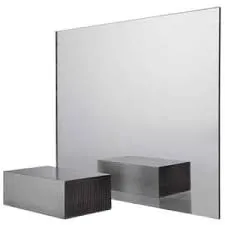

Exploring Low-E366 Glass Enhancing Energy Efficiency in Modern Architecture
In the realm of modern architecture, the materials we choose play a pivotal role in influencing the energy efficiency and overall sustainability of buildings. One such material that has gained remarkable attention is Low-E366 glass. This innovative glazing solution not only enhances the aesthetic appeal of structures but also significantly contributes to energy conservation efforts.
Exploring Low-E366 Glass Enhancing Energy Efficiency in Modern Architecture
One of the most remarkable features of Low-E366 glass is its ability to regulate indoor temperatures. By reducing the amount of solar heat gained during the summer months, it minimizes the reliance on artificial cooling systems, thus lowering energy consumption. In colder seasons, the glass retains heat, ensuring a comfortable indoor environment without excessive heating costs. This dual functionality not only enhances comfort for occupants but also reduces a building's carbon footprint.

Moreover, Low-E366 glass offers excellent UV protection. The coating filters out a significant percentage of harmful ultraviolet rays, which can cause fading of furnishings, artwork, and other interior elements. This aspect is particularly beneficial for commercial spaces like museums, galleries, and retail shops, where the preservation of aesthetic integrity is paramount.
The performance advantages of Low-E366 glass extend beyond energy efficiency and UV protection. It also boasts superior acoustic insulation properties, making it an excellent choice for urban environments where noise pollution can be a concern. The enhanced sound proofing provided by this type of glazing contributes to the overall comfort of the indoor environment, allowing occupants to enjoy peace and quiet despite the bustling world outside.
From a construction and architectural perspective, Low-E366 glass is versatile and can be incorporated into various building designs. Whether in residential homes, office buildings, or skyscrapers, its clear aesthetic appeal and energy-saving benefits make it a favored choice among architects and builders alike. Furthermore, with increasing regulations on energy efficiency in construction, the adoption of Low-E glass is becoming not just a trend but a necessity.
In conclusion, Low-E366 glass stands out as an exemplary solution in the pursuit of energy-efficient architectural design. By combining the advantages of insulation, UV protection, acoustic performance, and aesthetic appeal, it paves the way for more sustainable building practices. As the world continues to prioritize energy conservation and environmental responsibility, materials like Low-E366 glass will undoubtedly play a crucial role in shaping the future of architecture.